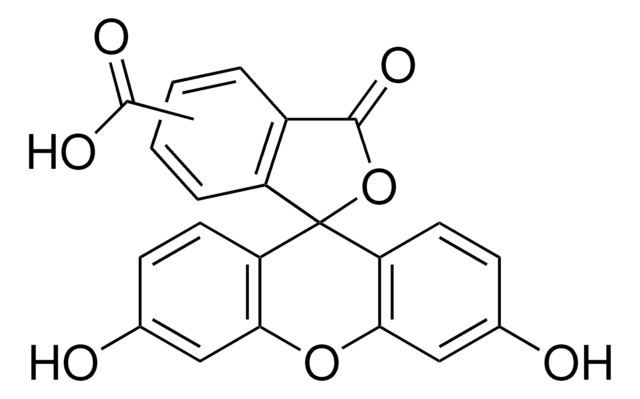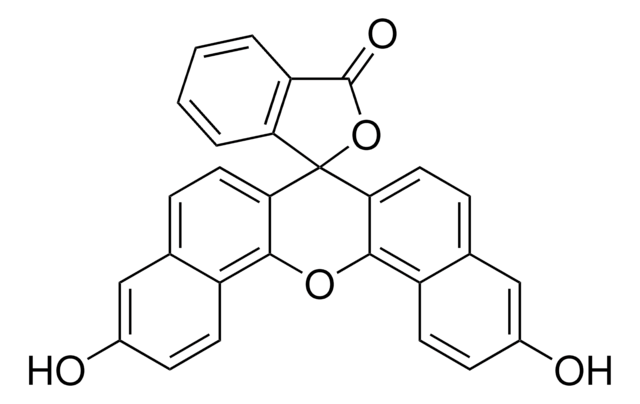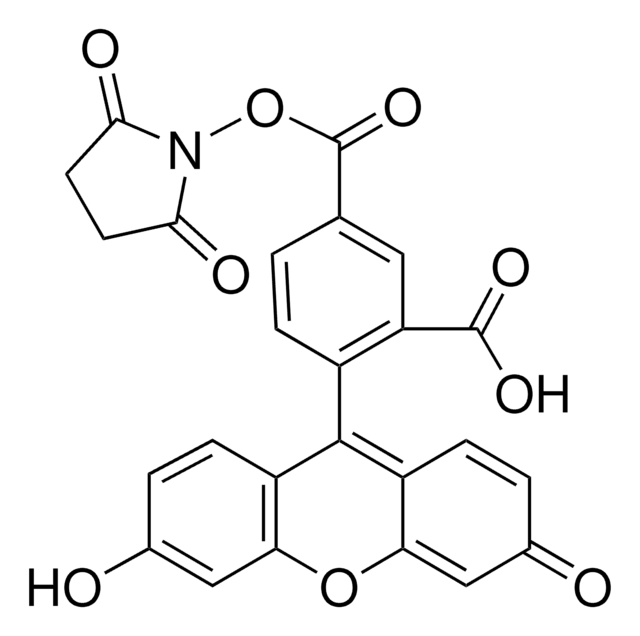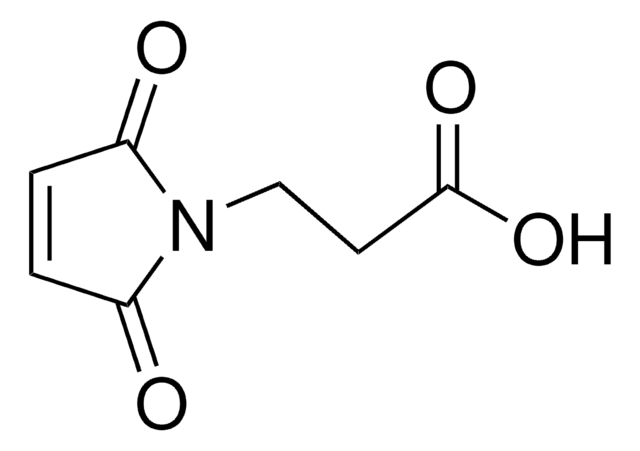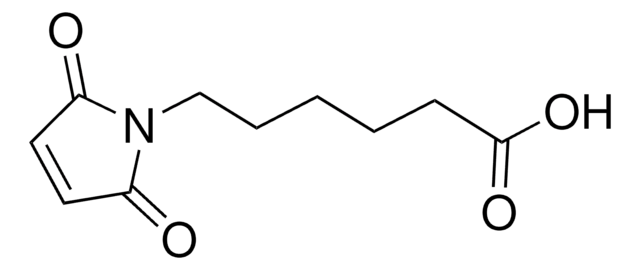21932
5(6)-Carboxynaphthofluorescein
BioReagent, suitable for fluorescence, ≥90% (HPLC)
About This Item
Recommended Products
product line
BioReagent
Quality Level
assay
≥90% (HPLC)
form
solid
pKa
7.6
fluorescence
λex 512 nm; λem 567 nm (acid/neutral)
λex 598 nm; λem 668 nm (basic)
suitability
suitable for fluorescence
SMILES string
OC(=O)c1ccc2c(c1)C(=O)OC23c4ccc5cc(O)ccc5c4Oc6c3ccc7cc(O)ccc67.OC(=O)c8ccc9C(=O)OC%10(c%11ccc%12cc(O)ccc%12c%11Oc%13c%10ccc%14cc(O)ccc%13%14)c9c8
InChI
1S/2C29H16O7/c30-17-4-6-19-14(11-17)1-9-23-25(19)35-26-20-7-5-18(31)12-15(20)2-10-24(26)29(23)22-8-3-16(27(32)33)13-21(22)28(34)36-29;30-17-4-7-19-14(11-17)2-9-22-25(19)35-26-20-8-5-18(31)12-15(20)3-10-23(26)29(22)24-13-16(27(32)33)1-6-21(24)28(34)36-29/h2*1-13,30-31H,(H,32,33)
InChI key
ANUHNEJUELPITC-UHFFFAOYSA-N
Application
Not finding the right product?
Try our Product Selector Tool.
Storage Class
11 - Combustible Solids
wgk_germany
WGK 3
flash_point_f
Not applicable
flash_point_c
Not applicable
ppe
Eyeshields, Gloves, type N95 (US)
Choose from one of the most recent versions:
Already Own This Product?
Find documentation for the products that you have recently purchased in the Document Library.
Our team of scientists has experience in all areas of research including Life Science, Material Science, Chemical Synthesis, Chromatography, Analytical and many others.
Contact Technical Service